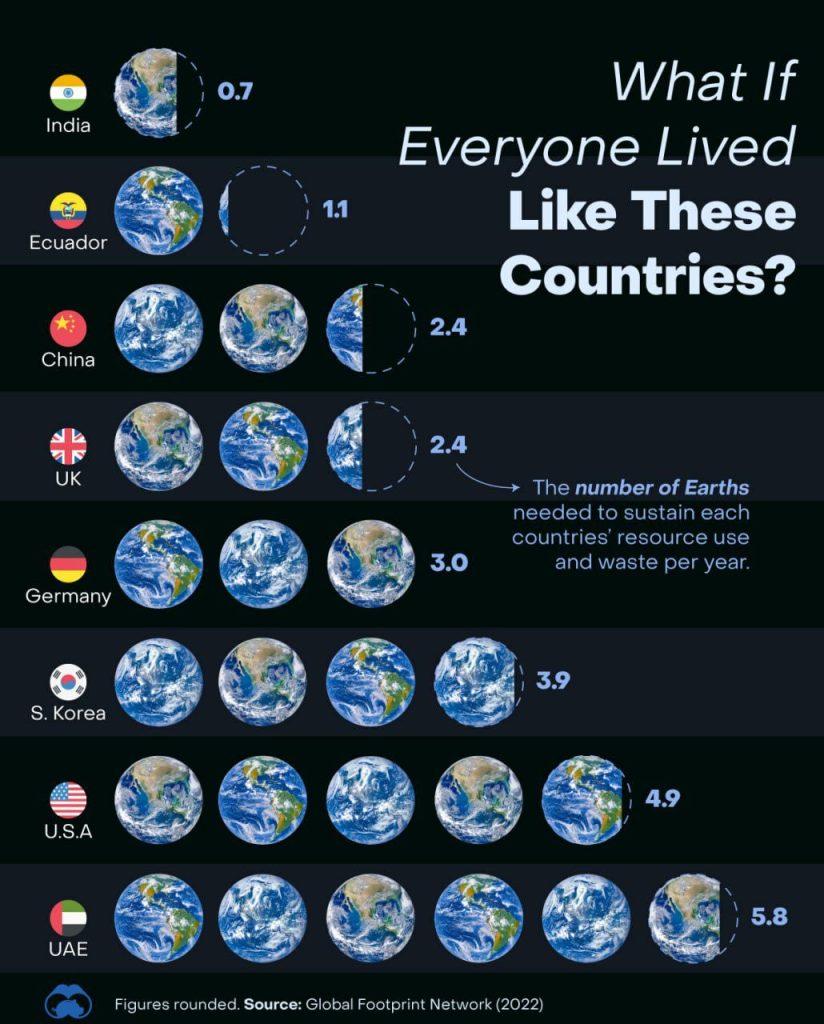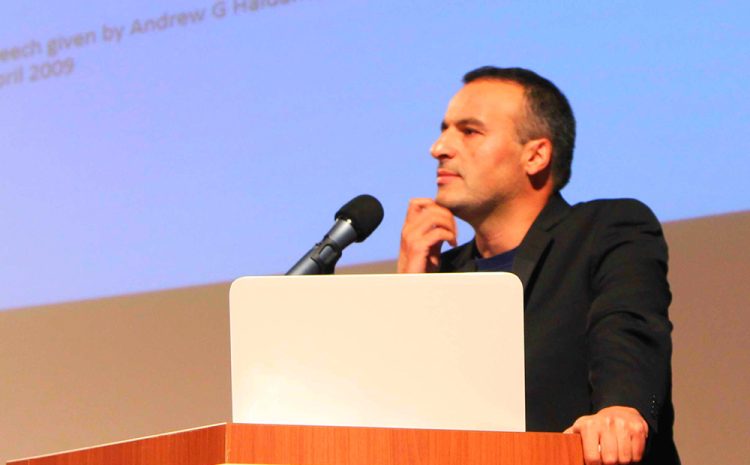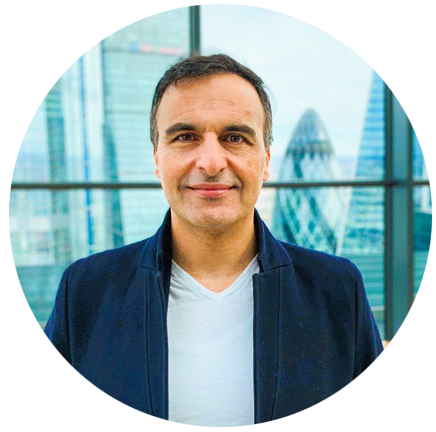
Using AI for Good — How Artificial Intelligence is Revolutionizing Impact Investing And What It Means For The SDGs
Farhad Reyazat – PhD in Risk Management ( Biography )
Citation: Reyazat, F. (2024, September 17). How Artificial Intelligence is Revolutionizing Impact Investing And What It Means For The SDGs. Dr. Farhad Reyazat. https://www.reyazat.com/2024/09/17/how-artificial-intelligence-is-revolutionizing-impact-investing-and-what-it-means-for-the-sdgs/
AI is a tremendous force in innovation, transforming global industries, and impact investment is no different. Integrating AI in Investments to Make a Global Impact. The adoption of AI in investment strategies can accelerate the process of solving the world’s most significant problems, which in turn helps fast-track the achievement of the United Nations Sustainable Development Goals (SDGs). The goals are a blueprint for achieving a better and more sustainable future for all by 2030. This includes ending poverty, reducing inequality, combating climate change, and promoting prosperity for all.
Impact investment, i.e., investments that aim to create a positive social and environmental impact beyond the sole provision of financial returns, has been gaining traction as an essential tool in attaining those objectives. However, it isn’t easy to make investment decisions that are fully compatible and measure the real-world difference they can make without sophisticated tools. The transformative solution is provided by AI, which can analyze data, model predictions, and automate processes.
How AI Can Bootstrap Impact Investing
The advanced data analytics, predictive capabilities, and automation offered by AI make impact investing quicker to deploy and more accurate, facilitating faster and better-informed decision-making. AI can help investors tie their investments to social and environmental outcomes and financial returns.
1. Decision Making Based on DataAI´s ability to process massive amounts of data realistically is a great advantage, enabling investors to make more informed decisions. Due to complexity and error, traditional data analysis often overlooks subtle patterns, trends, or risks. Still, these insights are detected through AI, which provides an opportunity for more creative investments. Some examples include AI, which can be used to identify areas requiring clean water infrastructure (SDG 6: Clean Water and Sanitation) or predict the optimal location for renewable energy investment (SDG 7: Affordable and Clean Energy).
2. Predictive Analytics: AI can predict the potential outcome by simulating different investment scenarios. This kind of foresight is crucial for investment strategies targeting certain SDGs. AI models can forecast the impact of investing different amounts in green technologies on carbon emissions reductions (SDG 13: Climate Action) and provide more scientific evidence for strategic investments that can lead to a specific impact.
3. Function-specific effectiveness, including Automation and Efficiency: AI can automate data collection and analysis with algorithms using natural-language processing or other models, saving critical time for high-level strategic planning by investors. AI frees human resources from operational work, boosting the productivity of large-impact investment portfolios with allocated resources where it can have an effect.
All for some AI: Leveraging AI to Drive Sustainable Development
Across various sectors, AI can be critically important in achieving these SDGs. With AI, investors and governments are establishing standards for human welfare in various areas, including healthcare, education, energy, and climate change mitigation.
1. Health issues have already been affected by this AI technology, as the transformation of the entire healthcare system has begun with it. Medical diagnostic tools based on AI can analyze medical images to detect diseases at an early stage, such as cancer, which will make treatment more effective and faster. AI is used to deliver remote health diagnostics in rural and underserved areas, thereby eliminating health disparities and increasing the accessibility of quality care.
2. No matter what. Reduce Inequality Progress (SDG 10): e.g., ML-based models can help perform sentiment analysis to measure the concentration of inhabitants. Tech Ed/QA Schooling (SDG 4): AI Classroom can give personalized, tailored learning experiences with test scores. These tools enable personalized teaching that matches a student’s learning style and pace, thereby strengthening needs-based education. AI is opening education to developing regions, lowering tuition fees, and allowing for a more inclusive approach to educating their students.
3. Climate Action (SDG 13): How AI has the most significant effect on sustainable development goals is climate action. AI models are utilized to monitor environmental conditions, forecast the impacts of climate change, and recommend preventive measures. For instance, analyzing satellite data to predict extreme weather events and help governments and organizations prepare for potential disasters can save lives and limit economic loss, all things AI is uniquely well suited for.
4. Considering the Millennium Development Goals (MDGs), this would have included a TO solution for Affordable and Clean Energy (SDG 7) — AI — Optimizes energy systems to include renewable sources such as solar, wind, etc. AI-driven smart grids enable the improvement of energy supply and demand factorization efficiency, minimize energy waste, and reduce dependency on non-renewable power sources. As a result, this directly contributes to the migration to more sustainable energy systems worldwide.
5. SDG 11 — Sustainable Cities and Communities: With more and more people becoming urbanized, AI plays a crucial role in creating sustainable cities. From Traffic Patterns Analysis to Decongestion and, finally, Air Pollution and Resource Usage monitoring, Smart City enabled by AI provides real-time intelligence to urban planners, leading to more innovative and sustainable urban environments. By using AI-driven tools, cities may become centers of economic growth and achieve minimal environmental footprints.
Why the World Needs Sustainable Development
Earlier in Part 1, we made the solid point that we need sustainable development. AI-powered would be very much there to help.

Here are 24 infographics to show the world’s unsustainable rate of consumption. For example, if everyone in the world lived as we do, or like the average U.S. resident, our resource use and waste would require 4.9 Earths if this were the case. The figure climbs to 5.8 Earths for the average UAE resident_processes more inputs than the planet can generate. If everyone conformed to the average lifestyle of an Indian, we would only require 0.7 Earths.
Regardless of whether things have improved, this disparity highlights the need for developed nations to adopt a more sustainable lifestyle and consumption patterns. AI can facilitate this transition by providing data-driven insights to enhance sustainable resource management and consumption practices, enabling businesses, governments, and individuals to adopt more responsible processes.
Challenges and Considerations
AI has many advantages but a few challenges AND ethical issues that need to be resolved for a longer, purposeful run in the world of impact investment.
1. Data Privacy and Security — AI is now more widely in use. It requires large-scale datasets that are handled, from which few contain personal information. Data has become more challenging in terms of ensuring robust data protection frameworks, so that the public remains confident that their data is protected and in compliance with legislation such as the GDPR.
2. However, due to data limitations and biases, AI could learn from misinformation and reinforce existing inequalities. It is critically important to remain vigilant in checking and validating AI systems’ output to ensure that these solutions support equity and inclusivity, especially when focusing investments in underserved or marginalized communities.
3. Environmental Impact — Paradoxically, while AI can mitigate environmental damage, its use creates an ecological burden. Training AI models requires tremendous computational resources and, by extension, significant carbon emissions. Solving this challenge will require the development of larger, energy-efficient AI, as well as adequate renewable energy sources in data-intensive industries.
Conclusion
In the context of impact investment, the convergence of this power with AI is a unique force for propelling us to achieve some or all of the SDGs by exercising choices informed by understanding — and addressing tough questions. Investors can utilize AI to make more informed investment decisions, allocate resources more efficiently, and ultimately quantify the real-world impact of their investments with greater accuracy. However, as we harness the power of AI, we must also consider its security breach issues, algorithmic bias, and carbon footprint, among other concerns.
Conventional approaches to investment will not be sufficient as the world races toward the 2030 deadline for achieving the SDGs. Long seen as the domain of highly engaged investors and former celebrities, it could not be more urgent that we find a way to mainstream impact investment. AI might provide the revolution required to make real and immediate sustainable development possible at a scale unimaginable until now. Responsible AI deployment and a forward-looking approach to technology can create a future in which economic growth, environmental stewardship, and social well-being are complementary — one in which we not only respect the boundaries of our planet but the dignity of all who call it home.
In high-level analysis, AI can make an impact investment more precise and pragmatic, and SDGs will transform AI to a greater extent, which is an essential point here, said Rajan, in conclusion. Through the ethical and practical use of AI, we have the opportunity to tackle the most pressing challenges in our world by helping to shape an increasingly sustainable future for everyone.
References :
Regona, M., Yigitcanlar, T., Hon, C., & Teo, M. (2024). Artificial Intelligence and Sustainable Development Goals: Systematic Literature Review of the construction industry. Sustainable Cities and Society, 105499. https://doi.org/10.1016/j.scs.2024.105499
Nahar, S. (2024). Modeling the effects of artificial intelligence (AI)-based innovation on sustainable development goals (SDGs): Applying a system dynamics perspective in a cross-country setting. Technological Forecasting and Social Change, 201, 123203. https://doi.org/10.1016/j.techfore.2023.123203
Vinuesa, R., Azizpour, H., Leite, I., Balaam, M., Dignum, V., Domisch, S., Felländer, A., Langhans, S. D., Tegmark, M., & Nerini, F. F. (2020). The role of artificial intelligence in achieving the Sustainable Development Goals. Nature Communications, 11(1). https://doi.org/10.1038/s41467-019-14108-y
Jungwirth, D., & Haluza, D. (2023). Artificial Intelligence and the Sustainable Development Goals: An Exploratory study in the context of the Society domain. Journal of Software Engineering and Applications, 16(04), 91–112. https://doi.org/10.4236/jsea.2023.164006
Jasper, P. (2024, July 9). Can AI help us achieve the SDGs? SDG Action. https://sdg-action.org/can-ai-help-us-achieve-the-sdgs/
Pigola, A., Da Costa, P. R., Carvalho, L. C., Da Silva, L. F., Kniess, C. T., & Maccari, E. A. (2021). Artificial Intelligence-Driven Digital Technologies to the Implementation of the Sustainable Development Goals: A Perspective from Brazil and Portugal. Sustainability, 13(24), 13669. https://doi.org/10.3390/su132413669
Truby, J. (2020). Governing Artificial Intelligence to benefit the UN Sustainable Development Goals. Sustainable Development, 28(4), 946–959. https://doi.org/10.1002/sd.2048
4 ways AI can super-charge sustainable development. (2024, September 10). World Economic Forum. https://www.weforum.org/agenda/2023/11/ai-sustainable-development/
Chen, M. (2023, October 31). AI, meet SI: Using artificial intelligence for sustainable investing. Robeco.com – the Investment Engineers. https://www.robeco.com/en-int/insights/2023/10/ai-meet-si-using-artificial-intelligence-for-sustainable-investing
Related Topics:






No Comments